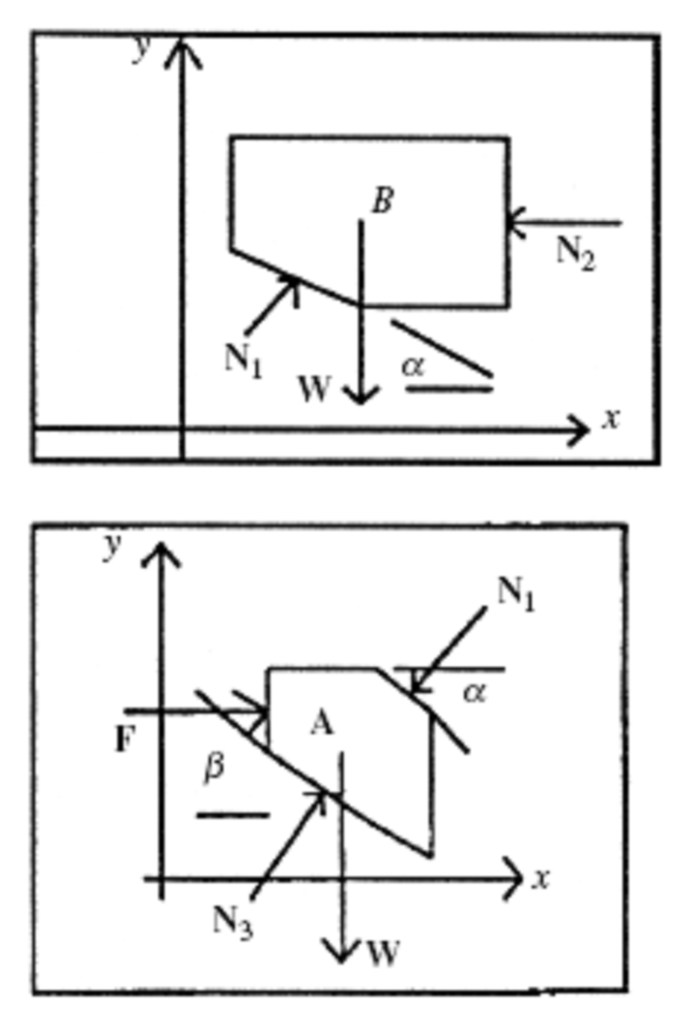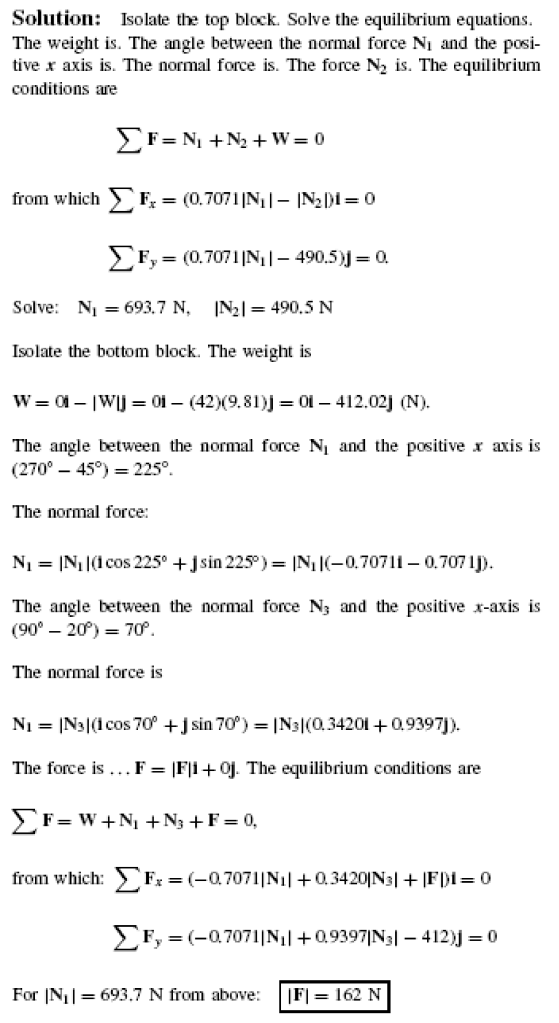<engineer>Of course the question says the surfaces are smooth, it doesn’t say they’re zero friction (such surfaces don’t exist). As it doesn’t give the coefficient of friction the problem is insoluble</engineer>
<mathematician>We’ll assume smooth means zero friction. Correct answer, IanMunro (surprised it took so long and so many attempts), though you your textbook overcomplicates things by solving in the normal axes and using simultaneous equations – if you turn your reference frames you can do without.
Borrowing your diagrams:
Resolving in the vertical direction for the top block (which removes N2 from the equation):
N1*cos45 = 50g
N1 = 70.71g
Resolving parallel to the inclined plane for the bottom block (which removes N3 from the equation):
F*cos20 = N1*sin25 – 42g*sin20
F = (70.71g*0.4226 – 42g*0.3420) / 0.9397
F = 16.51g = 162N
</mathematician>




